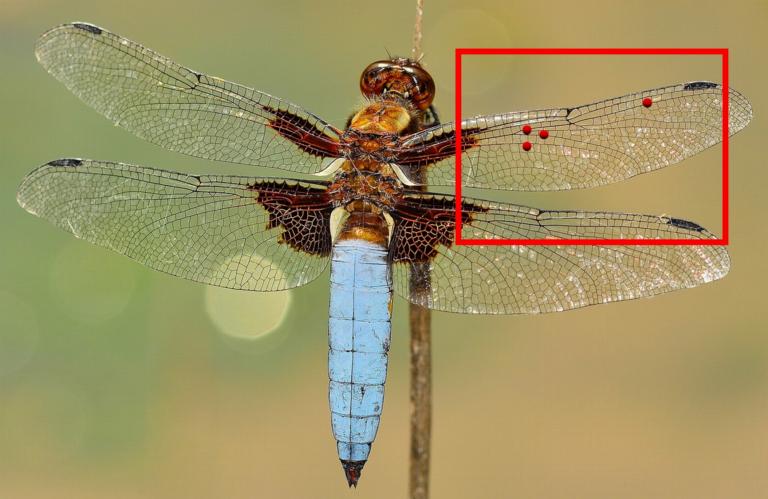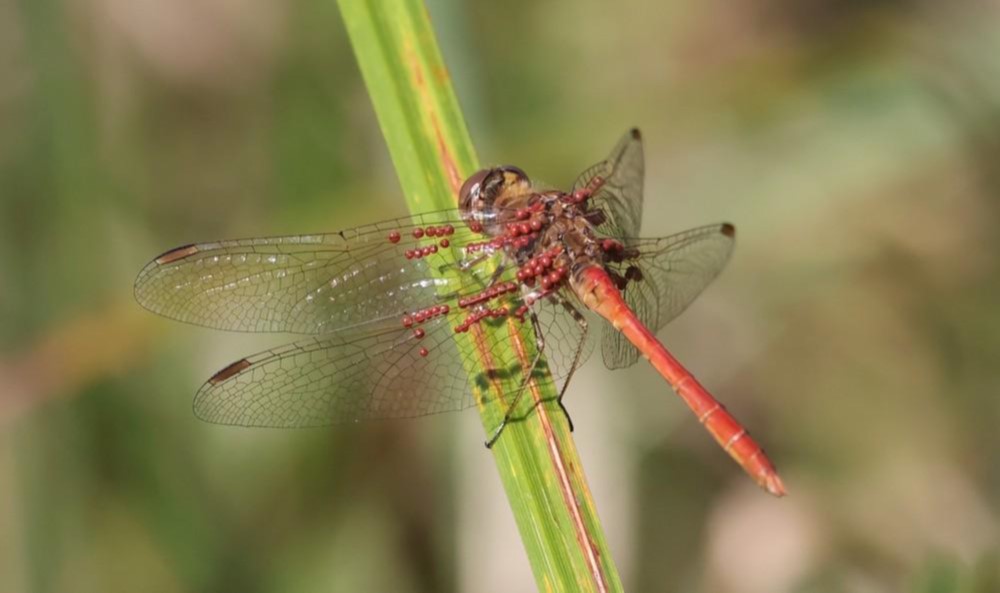
Citizen scientists have become vital in biodiversity research, aided by image recognition technology. This project aims to use AI to scan millions of images for parasites (aquatic mites and biting midges) of dragonflies and damselflies, providing valuable data for studying global distribution patterns. The project involves annotating training data, building an AI model, running it on images, and analyzing the resulting data.

Image by Hanns-Juergen Roland
Backgroundand context
Data collected by citizen scientists is increasingly important for the study of patterns and changes in biodiversity. In the past ten years, image recognition has contributed strongly to the quality and quantity of the collected data and allowed citizen scientists to collect data from a large variety of taxonomic groups. The two largest citizen scientist biodiversity portals, iNaturalis and Observation.org, annually collect tens of millions of images. These images serve as proof for the records collected by citizen scientists and allow for the identification to be checked by AI-based image recognition systems or experts. Much of the information hidden in these images remains unused - for instance, information on behavior, species interactions or the presence of other species.
Objectivesand goals
In this project, we will use AI-based image recognition to scan millions of images of the presence of two groups of parasites of dragonflies and damselflies: aquatic mites and biting midges. The resulting data will be used to address questions on the global distribution patterns of these groups and their taxonomic preference. Steps included in this project include annotating training data, building an AI-image recognition model, running this model on millions of images of dragonflies and damselflies, and analyzing the patterns shown in the resulting data. Depending on the student the focus can be more on the AI model building or the analyses of the data.
Materialsand methods
The project will use millions of images of dragonflies and damselflies from citizen science biodiversity portals. The project will make use of machine learning for the detection of aquatic mites and biting midges. The derived data will be analyzed using R-packages.
Studentrequirements
Skills: Coding skills
Interest: Computer Vision curiosity, Machine learning,